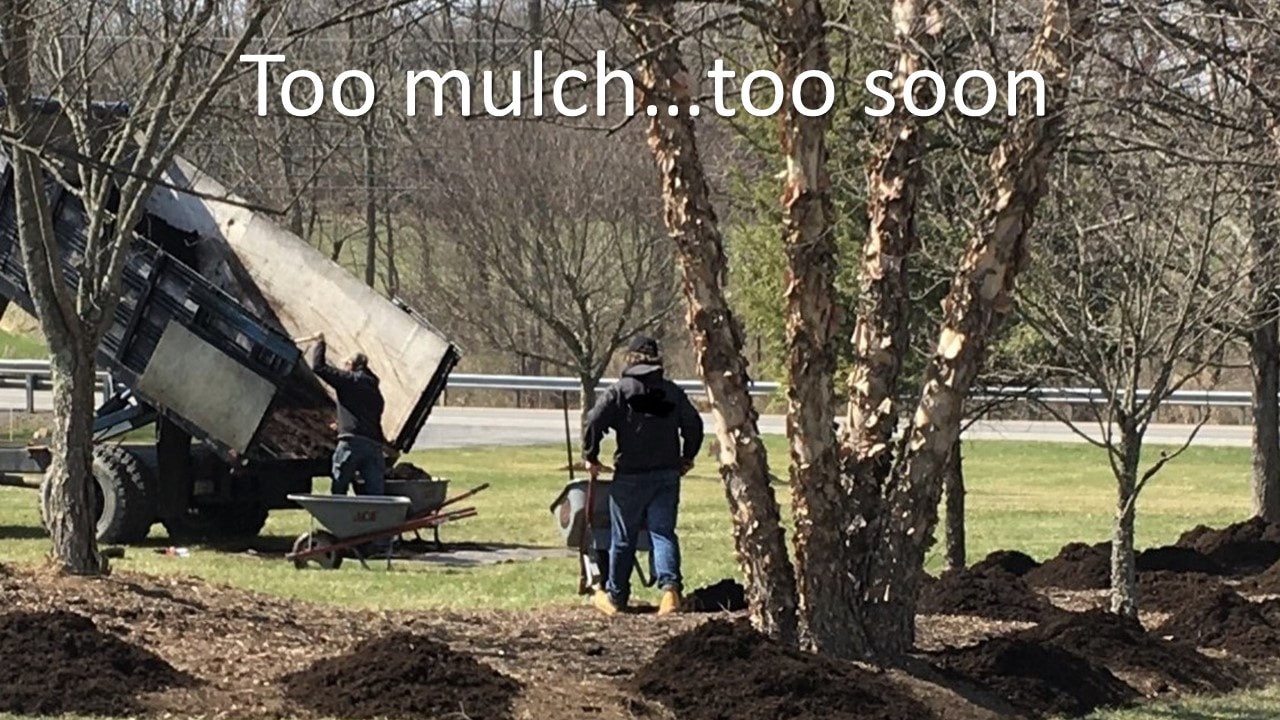Adding several inches of mulch is a good way to conserve moisture and control weeds in planting beds. But if layers are continually added year after year, it can build up to the point at which water can’t readily penetrate–actually hindering the plant from receiving the moisture it needs. Mulch can also harbor pests and diseases, especially when piled too close to a plant’s trunk (the ubiquitous ‘mulch volcano’).
Additionally, the practice has a harmful effect on pollinators. 70% of our native bees are solitary, ground nesting bees, making their homes in shallow tunnels beneath the soil. These bees cannot dig through mulch; even an inch or two is as impermeable as pavement to them. Instead, they must search for bare earth in which to construct their nests. The pupae overwinter in these tunnels, emerging in spring to begin their essential work of pollination. If a layer of mulch is dumped atop their homes before they can emerge, they’re in trouble!
If you already have several inches of mulch on your beds, consider raking it instead of adding more. This will freshen its appearance (and save you some money as well!.) Even better, choose to put down a layer of compost. It looks equally tidy, and will nourish your plants–and their pollinators, too!


 RSS Feed
RSS Feed